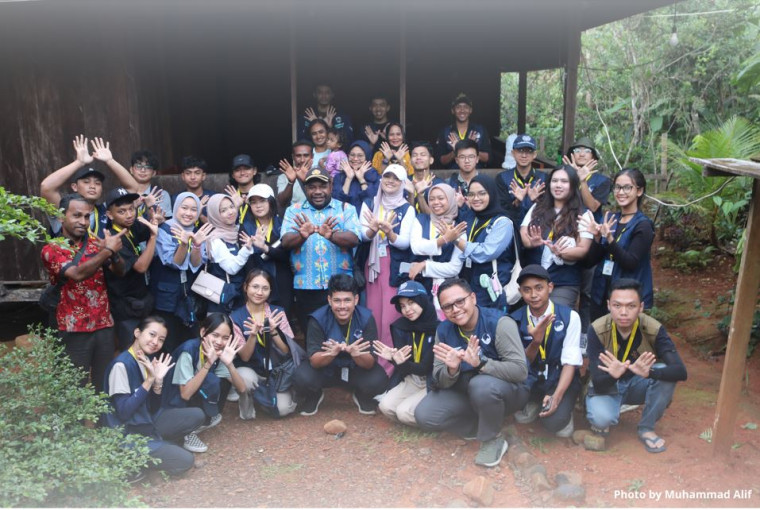
Raja Ampat Beach, with its white sands and the chirping of various birds, is truly extraordinary. Its natural splendor is genuinely captivating.
For many, the expanse of Raja Ampat’s nature soothes the soul, especially for anxious people. Although hidden among clusters of islands and stunning reefs, Raja Ampat is a paradise on the eastern edge of Indonesia.
The natural beauty of Raja Ampat has inspired the KKN-PPM team from Universitas Gadjah Mada (UGM), which is conducting community service in the Waisai City District.
A total of 29 UGM students from 13 faculties, guided by field supervisor Dr. Djaka Marwasta from the Faculty of Geography, will serve 50 days from Jul. 1 to Aug. 19, 2024.
The main focus will be on developing Raja Ampat’s natural resources as a national asset for the welfare of residents and enhancing Indonesian tourism on the world stage.
“The Waisai City District includes four sub-districts: Sapordanco, Waisai, Warmansen, and Bonkawir, with the main focus of this program being the development of Raja Ampat’s natural resources. The unique and extraordinary flora and fauna of Raja Ampat can embody Indonesia as Wonderland,” said Dhea Cornelia, a 2021 Vocational College student and Head of the Sorai Waisai KKN-PPM team, on Friday (Jul. 12).
Sending students to conduct community service through KKN-PPM in Raja Ampat has happened before for UGM. The 2024 period is the second phase with a new and highly potential theme in the local tourism utilization sector.
“Previously, UGM’s KKN in Raja Ampat focused on human resource development, but this year’s focus is on complementing and optimizing as well as promoting the local endemic of Waigeo Island in Waisai City, particularly the Bird of Paradise as an exotic bird of the world,” Cornelia said.
She explained that while previous KKN programs in Raja Ampat focused on human resource development, this year’s focus has been supplemented with optimization and promotion strategies for local endemics of Waigeo Island in Waisai City, exploring the Bird of Paradise as an exotic bird of the world.
The big theme of this year’s KKN team includes a work program to increase the competitiveness of exotic bird tourism.
According to Cornelia, her team’s work program will focus on revitalizing tourism objects and compiling information about exotic bird species.
Additionally, it will enhance human resource knowledge about exotic birds, the conservation and digitalization of information systems, and branding for exotic bird tourism in Warkesi, Waisai City.
This program will undoubtedly change the landscape of tourism in Raja Ampat. Previously known for its underwater tourism, it now presents new options for using its natural resources.
Optimizing endemic tourism potential must involve all elements, including the government, local communities, and related agencies, according to their respective roles.
“Students will coordinate with various related OPDs (Regional Work Units) to align work programs to synergize in optimizing local eco-education tourism as exotic birds of the world,” Cornelia explained.
One of the Sorai Waisai team members, Yuda Pramudia, a 2021 Philosophy student, explained that the current location still needs permanent tourist spots that attract mass tourism. Tourism spots such as Piaynemo, Kalibiru, Wayag, and Misool are still centered around marine tourism.
The land area of Waisai City, he said, only serves as a transit hub for the tourism above spots. However, the potential for tourism, especially in the conservation of endemic birds, holds significant value and can enhance the economy, particularly for residents in Waisai City.
“Although the main focus of Sorai Waisai is on optimizing local endemic bird tourism on Waigeo Island, the KKN-PPM team will also identify social and cultural issues in the community, especially regarding social disparities, urban planning, and developing sustainable tourism-based village and city strategies,” Pramudia explained.
Author: Agung Nugroho

